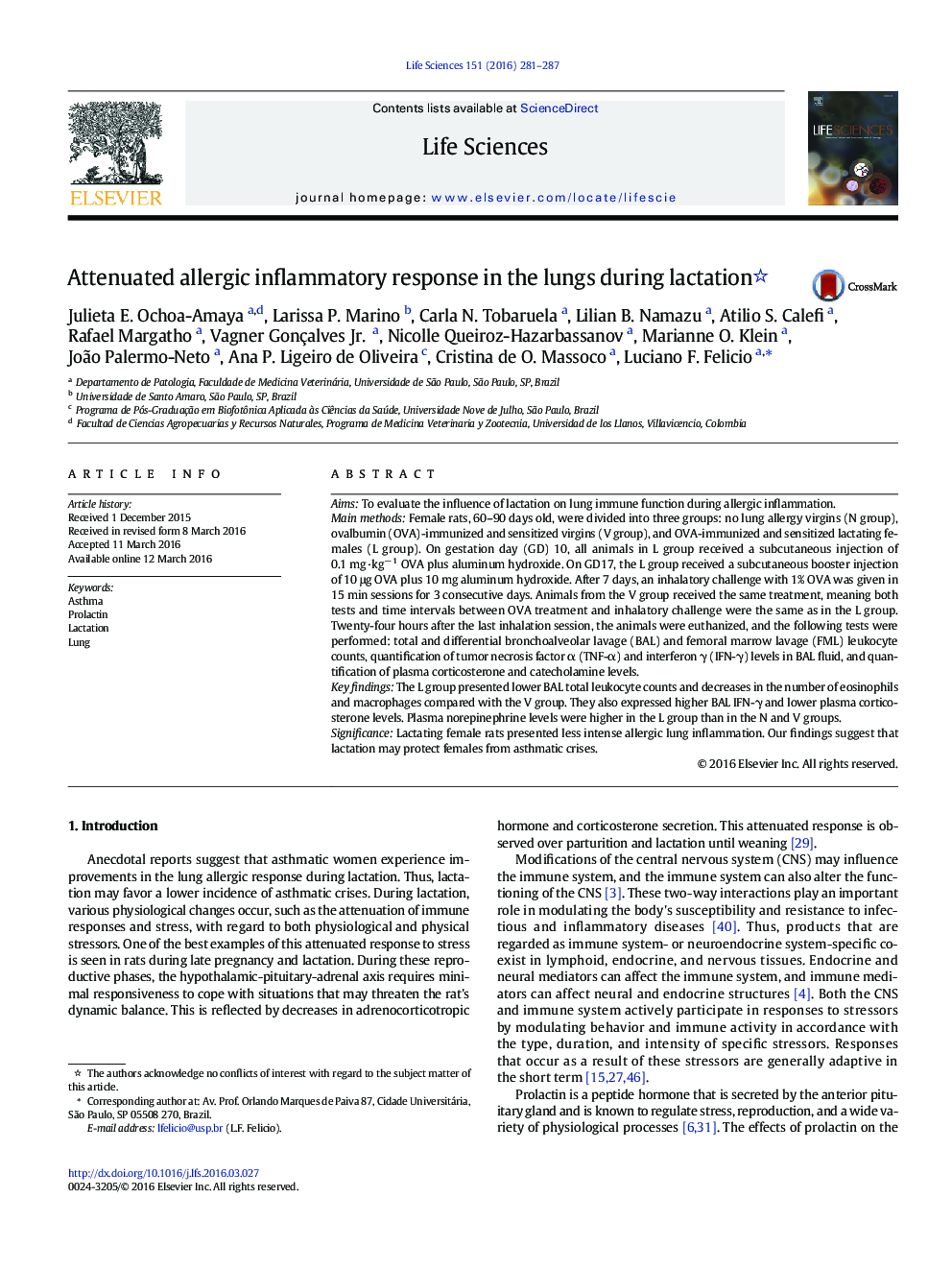| Article ID | Journal | Published Year | Pages | File Type |
|---|---|---|---|---|
| 5841409 | Life Sciences | 2016 | 7 Pages |
AimsTo evaluate the influence of lactation on lung immune function during allergic inflammation.Main methodsFemale rats, 60-90 days old, were divided into three groups: no lung allergy virgins (N group), ovalbumin (OVA)-immunized and sensitized virgins (V group), and OVA-immunized and sensitized lactating females (L group). On gestation day (GD) 10, all animals in L group received a subcutaneous injection of 0.1 mg·kgâ 1 OVA plus aluminum hydroxide. On GD17, the L group received a subcutaneous booster injection of 10 μg OVA plus 10 mg aluminum hydroxide. After 7 days, an inhalatory challenge with 1% OVA was given in 15 min sessions for 3 consecutive days. Animals from the V group received the same treatment, meaning both tests and time intervals between OVA treatment and inhalatory challenge were the same as in the L group. Twenty-four hours after the last inhalation session, the animals were euthanized, and the following tests were performed: total and differential bronchoalveolar lavage (BAL) and femoral marrow lavage (FML) leukocyte counts, quantification of tumor necrosis factor α (TNF-α) and interferon γ (IFN-γ) levels in BAL fluid, and quantification of plasma corticosterone and catecholamine levels.Key findingsThe L group presented lower BAL total leukocyte counts and decreases in the number of eosinophils and macrophages compared with the V group. They also expressed higher BAL IFN-γ and lower plasma corticosterone levels. Plasma norepinephrine levels were higher in the L group than in the N and V groups.SignificanceLactating female rats presented less intense allergic lung inflammation. Our findings suggest that lactation may protect females from asthmatic crises.
